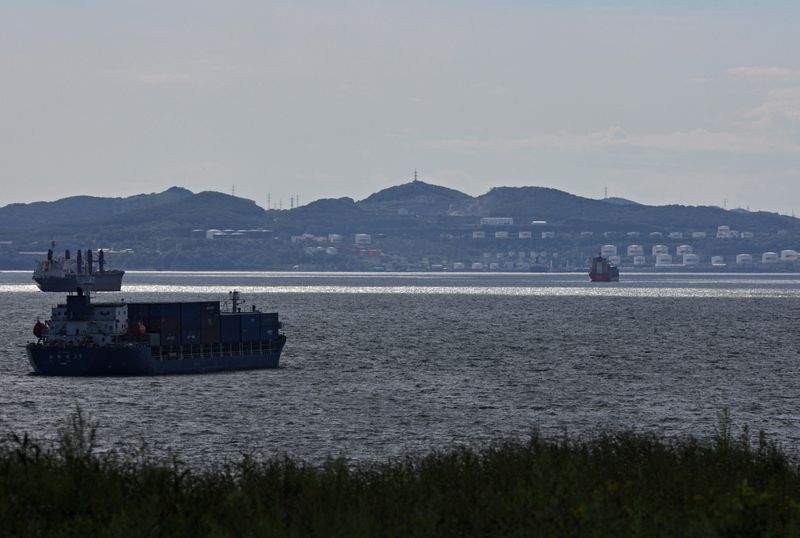By Jesus Calero, Agnieszka Olenska and Anne Kauranen
(Reuters) – Western sanctions imposed on Russia for invading Ukraine and aimed at cutting its oil revenues have led to the rise of a vast “shadow fleet” of tankers helping Moscow keep its crude exports flowing.
Here are some key points about these unregulated vessels.
WHY IS THIS FLEET IN THE NEWS?
Estonia on Tuesday tried to stop an oil tanker, which the UK sanctioned last week, for sailing without a flag against maritime rules, in international waters between Estonia and Finland in the Baltic Sea, prompting Moscow to send a fighter jet to circle around it.
The UK ordered fresh sanctions last week against up to 100 oil tankers that form “a core part of (Russian President Vladimir) Putin’s shadow fleet operation”, it said, while the EU Commission made a similar proposal against 100 vessels, on top of 153 it had sanctioned previously.
The U.S. has also imposed multiple rounds of sanctions against the tankers that transport Russian oil.
AGEING VESSELS
There are hundreds of ageing tankers in the so-called shadow fleet, which transport Russian oil.
The vessels typically have opaque ownership structures and sail without top-tier Western insurance or safety certification cover, and they often have unknown insurers or assessors of vessel seaworthiness – both required for ocean-going commercial ships, shipping and insurance industry sources familiar with the matter have said.
Many of these tankers sail across the Baltic Sea and move oil through the Gulf of Finland, a critical route for Russia’s energy exports.
NATO and EU regulators say they are monitoring the fleet as new sanctions target vessels already blacklisted for skirting price caps or aiding Moscow’s war effort in Ukraine.
A dozen Western countries – Britain, Germany, Poland, the Netherlands, five Nordic nations and the three Baltic states – agreed in December to “disrupt and deter” Russia’s shadow fleet in response to several unexplained cable cuts and undersea incidents around critical infrastructure in the Baltic Sea.
Britain, Denmark, Sweden, Poland, Finland and Estonia say they are inspecting vessel insurance documents in the Channel, the Danish Straits, the Gulf of Finland, and the strait between Sweden and Denmark.
HOW DOES THE SHADOW FLEET OPERATE?
The shadow fleet uses tactics like ship-to-ship transfers in international waters, where monitoring from port control authorities is weaker, and falsification, including fake ship identification numbers, spoofed location data, and using flag countries with lower oversight, Lloyd’s List Intelligence and Finland’s Coast Guard have said.
Story continues
